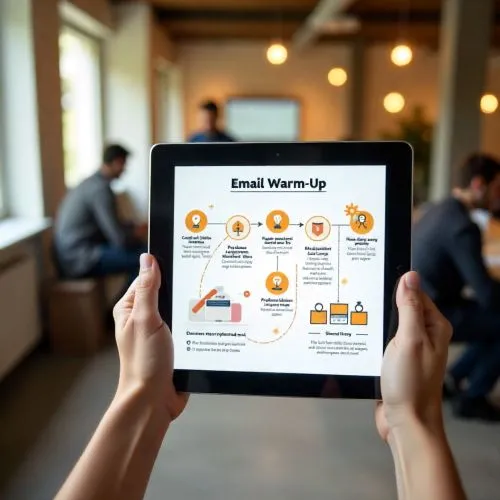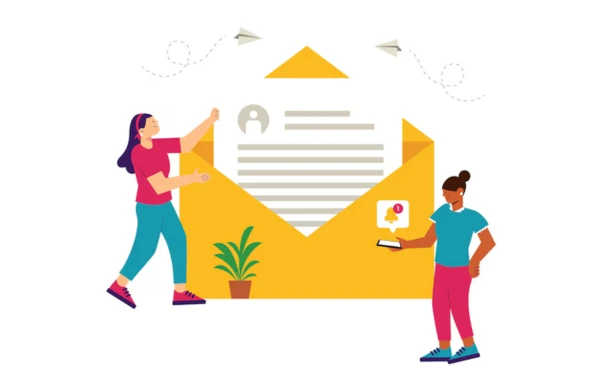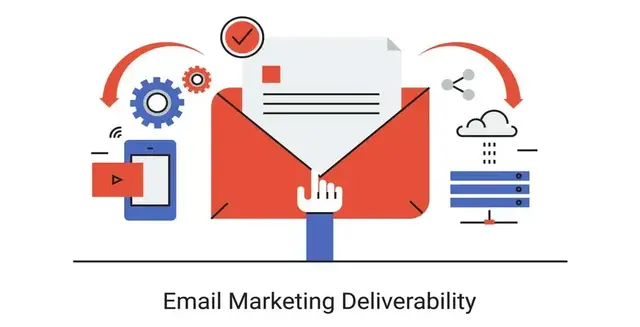Yes, Boost Inbox is designed to cater to businesses of all sizes and industries.

Have you ever sent out an important email only to find it sitting in the spam folder instead of someone’s inbox? That’s frustrating-and it can hurt your business.
This is why people often ask, “How to warm up my email for better deliverability?”
When you create a new email account or a new email domain, email providers like Gmail, Outlook, and Yahoo don’t trust it right away. They need proof that you’re a safe sender. That’s where the email warm up process comes in.
Warming up an email simply means sending a small number of emails first, then slowly increasing volume while building a positive sender reputation. Done right, it helps improve inbox placement, avoid the spam folder, and keep your messages where they belong-front and center.
What Does Email Warm Up Mean?
Warm up email means starting slow and steady. Think of it like going to the gym-you don’t lift 200 pounds on day one. Instead, you build up strength gradually.
For email, warming up involves:
• Sending gradual email sending volumes.
• Getting real email engagement (opens, clicks, replies).
• Protecting your domain reputation.
• Building trust with email providers.
Without this process, your emails might get high bounce rates, low engagement, and end up in spam.
Step 1: Start with Authentication (SPF, DKIM, DMARC)

Before you send even one email, you need to set up email authentication. This tells providers that your email is real, not fake.
• SPF (Sender Policy Framework): Verifies that your server is allowed to send emails.
• DKIM (DomainKeys Identified Mail): Adds a digital signature so emails aren’t altered.
• DMARC (Domain-based Message Authentication): Combines SPF and DKIM to block suspicious activity.
Having these in place is one of the most important best practices for email deliverability.
Step 2: Send Small Batches First
When people ask, “How to warm up my email for better deliverability?” the first tip is simple: don’t send 1,000 emails on day one.
Instead:
• Day 1–3: Send 10–20 emails.
• Week 1: Increase slowly to 50–100.
• Week 2 and beyond: Keep scaling based on engagement.
This gradual email sending shows providers that you’re a consistent, trustworthy sender.
Step 3: Focus on Engagement
Email engagement rate is the percentage of people opening and interacting with your email. The higher it is, the better your email deliverability.
Tips to increase engagement:
• Send emails to people who actually want them.
• Write clear subject lines.
• Add personal touches (like first names).
• Keep content simple and relevant.
High engagement lowers spam complaints and boosts your inbox health check score.
Step 4: Avoid the Spam Folder
The nightmare for every sender is the spam folder. Here’s how to stay out:
• Don’t use spammy words like “FREE!!!” or “Act Now!!!” in subject lines.
• Keep your bounce rate low by cleaning your list.
• Send emails consistently (don’t disappear for weeks).
• Warm up both your email domain and email account.
A clean sender history improves email deliverability tips results over time.
Step 5: Build and Protect Your Sender Reputation
Think of your sender reputation like a credit score. If it’s bad, providers won’t trust you. If it’s strong, your emails land in the inbox.
Ways to build a good email sender reputation:
• Avoid sudden spikes in sending volume.
• Keep complaint rates below 0.1%.
• Regularly check domain reputation using tools like Google Postmaster.
• Maintain list hygiene (remove inactive contacts).
Step 6: Use a Warm Up Schedule
Many marketers follow a cold email warm up schedule when launching a new campaign. For example:
• Week 1: Send only to friends or trusted contacts who will open and reply.
• Week 2: Add a small group of real prospects.
• Week 3: Expand to larger groups.
This ensures your email warm up process works naturally and your email marketing success improves steadily.
Step 7: Monitor Deliverability Metrics
Warming up isn’t just about sending-it’s about measuring. Keep track of:
• Open rates
• Click-through rates
• Bounce rates
• Spam complaints
These numbers tell you if your inbox placement is improving or if changes are needed.
Extra Best Practices for Email Deliverability
To master how to warm up my email for better deliverability, combine the basics with these advanced tips:
• Use a custom domain instead of free services.
• Send text-only emails during warm up instead of image-heavy emails.
• Test your inbox placement with email trust signals tools.
• Keep sending limits in mind-Gmail allows 500 per day for new accounts, but you should start much lower.
Conclusion
Building Trust Over Time
Warming up your email isn’t complicated, but it does require patience. If you rush, you risk ruining your domain reputation and landing in spam. But if you follow the right email warm up process, set up authentication, start small, and focus on engagement, you’ll see your inbox rates soar.
So the next time you ask, “How to warm up my email for better deliverability?” remember this: treat your email like a relationship. Build trust step by step, and your email marketing success will follow.
What to read next
Absolutely! Boost Inbox is compatible with most major email service providers.
The warmup process duration may vary depending on your email volume, but it typically ranges from a few days to a couple of weeks.
Yes, Boost Inbox offers dedicated customer support to assist you throughout the warmup process.
While it's possible, it's best to start the warmup process from the beginning with Boost Inbox for optimal results.

